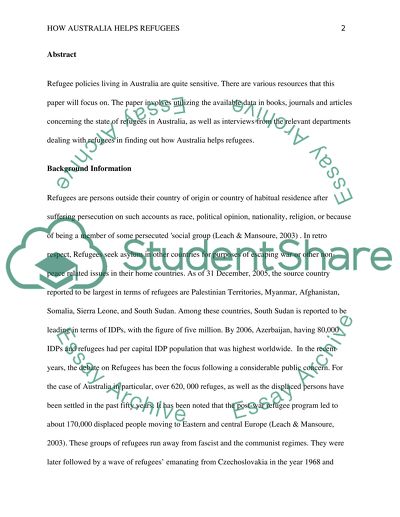Cite this document
(“How Australia Helps Refugees Research Paper Example | Topics and Well Written Essays - 1750 words”, n.d.)
Retrieved from https://studentshare.org/sociology/1459299-how-australia-helps-refugees
Retrieved from https://studentshare.org/sociology/1459299-how-australia-helps-refugees
(How Australia Helps Refugees Research Paper Example | Topics and Well Written Essays - 1750 Words)
https://studentshare.org/sociology/1459299-how-australia-helps-refugees.
https://studentshare.org/sociology/1459299-how-australia-helps-refugees.
“How Australia Helps Refugees Research Paper Example | Topics and Well Written Essays - 1750 Words”, n.d. https://studentshare.org/sociology/1459299-how-australia-helps-refugees.


